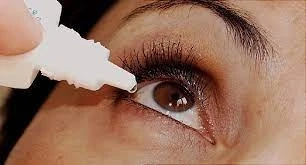Uveitis is inflammation of the eye. It's a common disease. Various factors cause swelling of the central tissue layer of the eyewall, uvea, and the tissues surrounding them.
In this article, we will be discussing the causes, symptoms, diagnosis, and treatment. Though it is not an individual disease, the causes of the disease are many and inflict the loss of vision in the eye, if left untreated. People are affected between the age of 20 to 60 years. Changes in lifestyle and diet can control the disease by avoiding sour foods as they can exacerbate the symptoms because of acidic content in them. Lifestyle modifications such as yoga, walking relax the central nervous system eliminating stress through the release of hormone endorphins.
Types of Uveitis:
Uveitis is of two types infectious and non-infectious:
Non-infectious Uveitis may occur from injury or disease in some other area of your body.
Infectious Uveitis occurs because of complications by bacteria, virus, fungal, and helminthic.
Uveitis treatment through Ayurveda vs allopathy
Though many people are aware of allopathic treatment for the disease, this disease can be efficiently cured by ayurvedic therapies. Allopathic treatment includes ophthalmoscope, optical coherence tomography, and fluorescein angiography.
Ayurveda treatment is done through various herbs that are natural remedies to treat the illness. Some herbs that are used in treatment of Uveitis are:
Giloy: It is a plant used for treating disorders such as constipation, fever, gout, fatigue, jaundice, and liver problems. Giloy has anti-pyretic, anti-inflammatory, anti-gout preventing the inflammation of joints because of uric acid accumulation, immunomodulatory and antioxidant properties.
Licorice root: It is obtained from the licorice plant and is a herbal remedy used in traditional medicine. This plant has glycyrrhizin (also known as glycyrrhizic acid) which is anti-inflammatory, anti-allergic, and helps in reducing mucus secretions.
Turmeric: Turmeric is an anti-inflammatory, anti-infectious, anti-carcinogenic, and immune-boosting substance. It is commonly found in Indian households. Turmeric is used in many Indian foods and is anti-carcinogenic.
The treatment with the following herbs is supported with ayurvedic food preventing inflammation and infections.
Panchakarma is used to detoxify the human system through various methods. Ayurvedic treatment balances Vata, pitta, and Kapha, whose imbalance seems to disrupt the human body's normal functioning.
Vata is the air element in the body; Kapha is composed of air and water elements. Pitta is an element that is responsible for metabolism and transformation happening in the body. The ayurvedic treatment plan is tailored according to an individual's health condition, enabling body purification for curing the disease permanently depending on the cause, severity, and location of the inflammation.
Uveitis treatment is symptom-specific and patient-centric. The patient is recommended to wear dark glasses for avoiding bright light. The physician recommends eye exercise for strengthening the eye muscles.
The treatment in Ayurveda focuses on detoxifying the body. This is done through various procedures such as virechana, a type of purgation to remove toxins from the body. Virechana is a treatment method when your pitta is imbalanced, leading to various disorders.
Causes:
Uveitis can occur because of the inflammatory response in the eye, which is a part of the immune response. The inflammatory response or immune response occurs as a body's natural response because of tissue damage, germs, or toxins. This causes swelling and pain as white blood cells migrate to the affected body part to eliminate the damage's external factors. The disease is caused by an injury, autoimmune or inflammatory disease.
Sometimes the causes for Uveitis are unknown and may lead to complications of permanent vision loss if not treated at the right time. The causes for Uveitis are the presence of chronic ailments such as psoriasis, juvenile arthritis, rheumatoid arthritis, Crohn's disease, ulcerative colitis, AIDs, and HIV that tend to affect the immune system.
Symptoms:
The onset of Uveitis is sudden, with warning signs aggravating quickly. A few of the symptoms include eye redness, eye pain, and blurred vision. The symptoms of Uveitis are redness and pain associated with general vision problems consisting of blurred or cloudy vision, dark floaters in the eye that seem to appear as tiny rods or chains of transparent bubbles floating in the visual field. Other common symptoms are photophobia, which is sensitivity to light, headaches, small pupil, change in the iris colour, reduced vision, blood vessel leakage, or swelling.
Diagnosis:
Diagnosis in Ayurveda occurs by identifying elemental imbalances such as air, water, ether, fire and space. Ayurveda diagnoses Uveitis through the imbalance in body elements such as Vata, pitta, and Kapha compared to conventional methods of allopathic medicines like X-ray and scans. Ayurveda addresses the root cause of the ailment, intending to eradicate the disease.
Allopathy treats Uveitis through medicines that may have adverse effects, however, Ayurveda treats Uveitis through herbs by understanding the underlying cause of the disease with minimum adverse effects.


